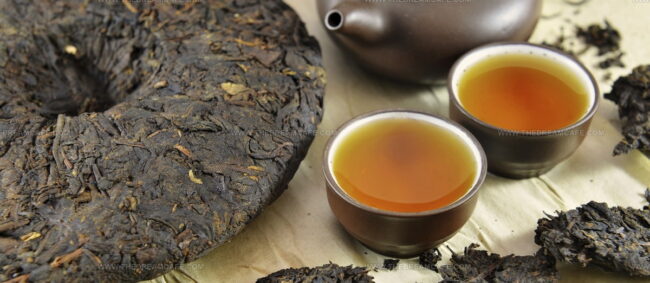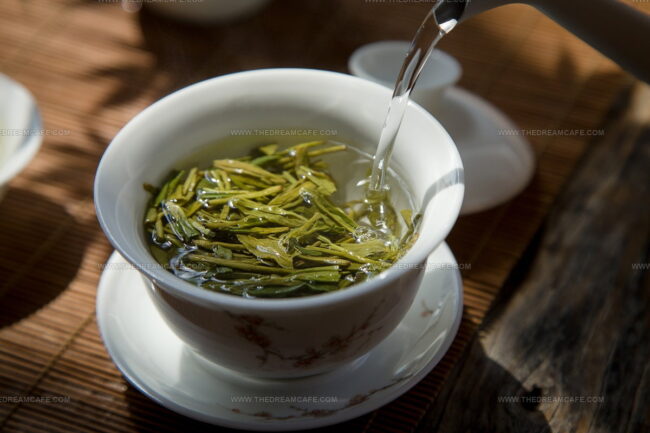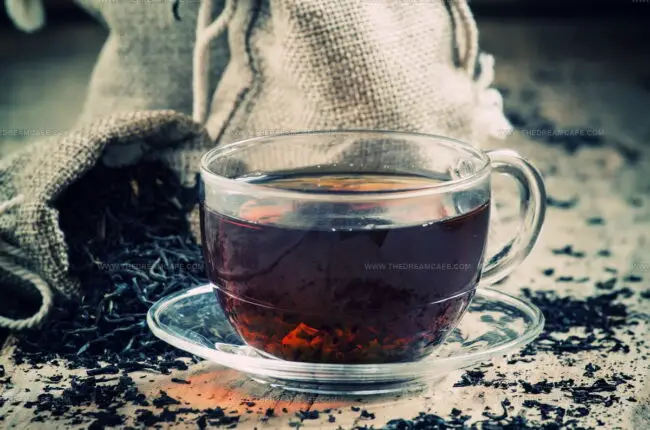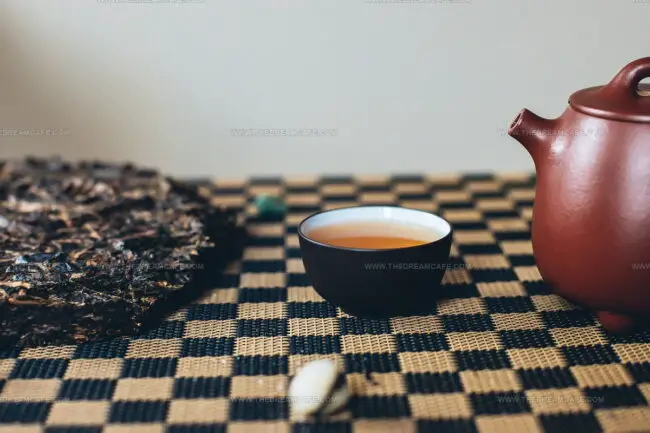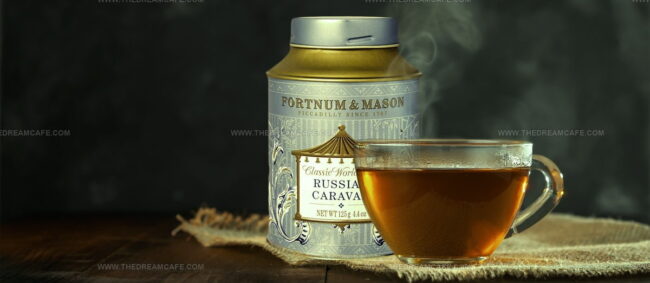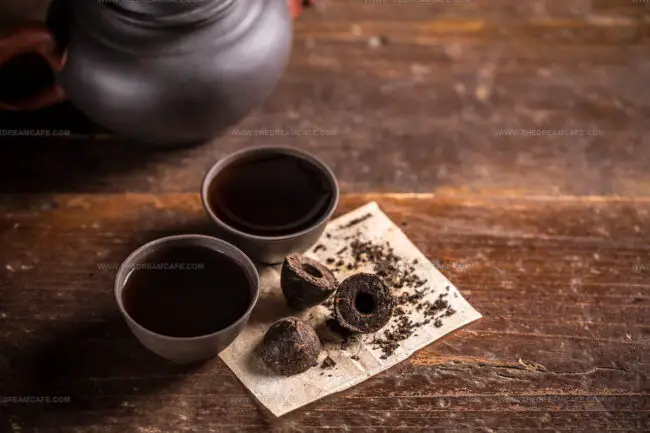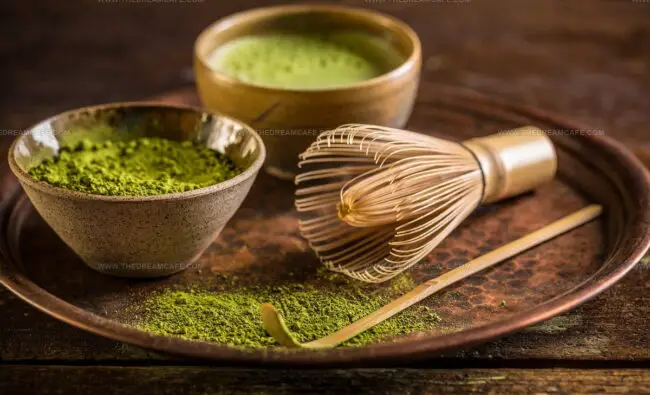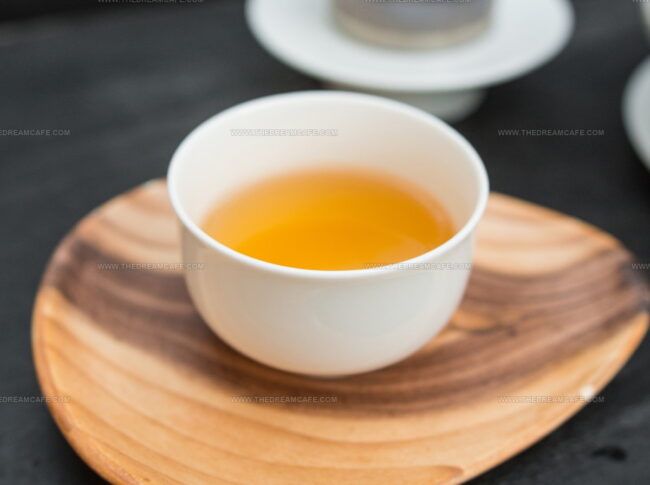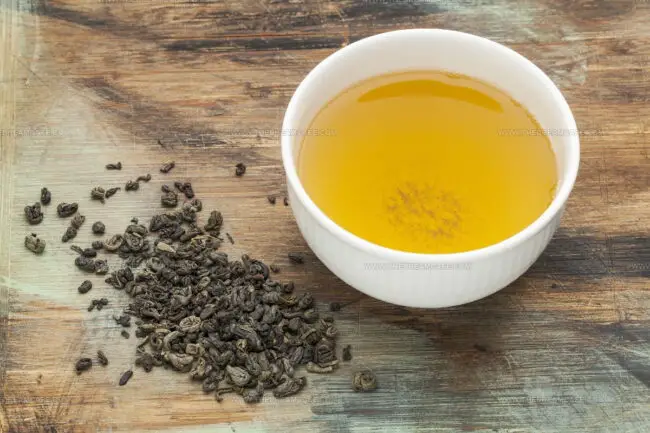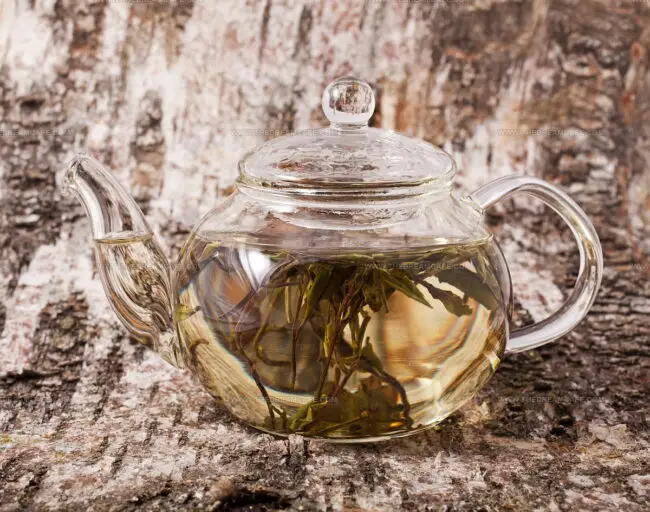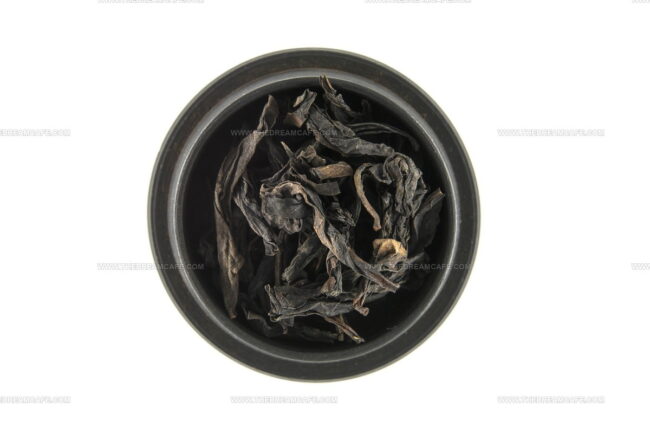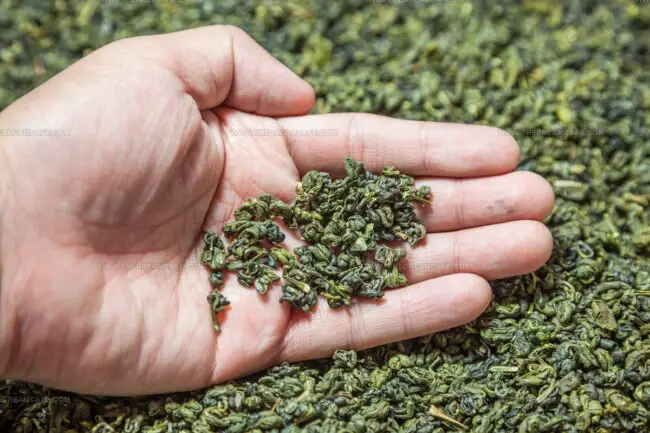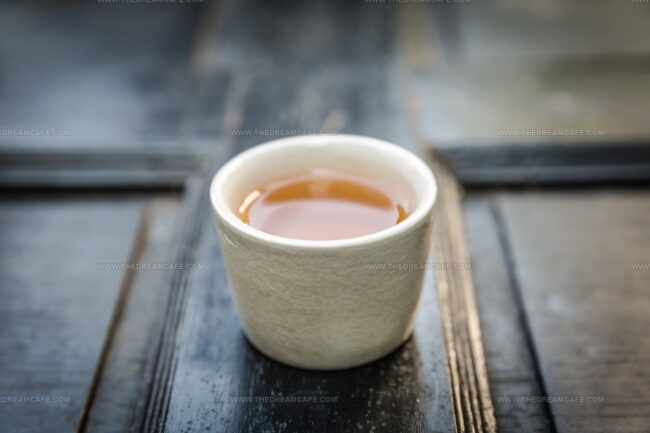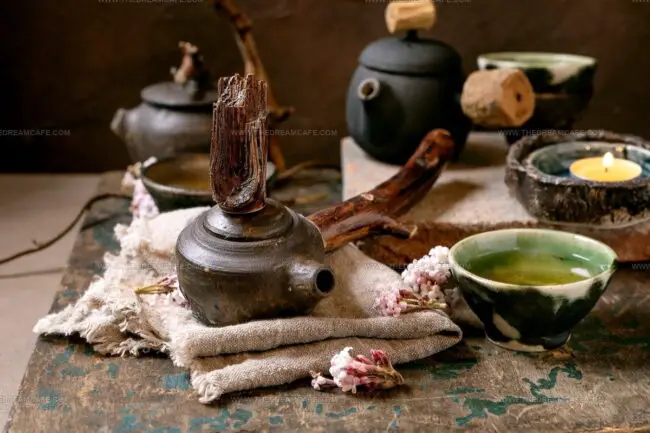24 Remarkable Chinese Teas You Need to Know About
Chinese teas offer a mesmerizing journey through ancient traditions and rich cultural heritage.
These remarkable beverages have captivated people worldwide with their complex flavors and profound health benefits.
Tea masters have carefully cultivated unique techniques passed down through generations, transforming simple leaves into extraordinary elixirs.
Each variety carries its own distinctive character, reflecting the landscape and climate of its origin.
Subtle nuances emerge from careful processing methods that transform raw leaves into delicate, aromatic experiences.
Passionate tea enthusiasts appreciate the meticulous craftsmanship behind every carefully brewed cup.
These beverages represent more than just a drink - they embody a philosophical connection to nature and wellness.
Dive into our comprehensive list of 22 essential Chinese teas to uncover their remarkable stories:
Chinese Tea Types That Define a Culture
Enter a world of delicate aromas and centuries-old rituals with Chinese tea. There’s a perfect cup waiting for every mood and every moment.
Pu Erh
Pu erh tea embodies China's rich tea heritage as a complex fermented beverage originating exclusively in Yunnan province, distinguished by its unique aging process that transforms raw tea leaves into a deeply nuanced drink.
Two primary varieties emerge: raw (sheng) and ripe (shu) pu erh, each offering distinct flavor profiles ranging from fresh and vegetal to smooth and earthy.
Yunnan's mountainous terrain provides ideal conditions for cultivating these exceptional tea leaves, which undergo meticulous processing techniques passed down through generations.
Tea masters carefully ferment and age the leaves, developing rich, mellow characteristics that improve over time like fine wine.
Compression into various shapes such as bricks, cakes, bells, and mushrooms allows for convenient storage and transport.
Traditional brewing methods emphasize multiple short steepings to extract complex layers of flavor and aroma.
Collectors and tea enthusiasts worldwide prize aged pu erh for its remarkable depth and historical significance.
Longjing Tea (Longjing Cha)
Longjing tea represents a premium pan-roasted green tea from China with emerald-colored leaves harvested exclusively in spring.
Authentic versions command extraordinary prices up to $875 per kilo due to exceptional quality and limited production.
Carefully roasted leaves create a distinctive green-gold brew with complex flavor profiles featuring buttery, toasty, and nutty undertones.
Skilled tea makers transform fresh tea leaves through precise roasting techniques that flatten and smooth each leaf.
Traditional preparation involves gentle pan-roasting that preserves the tea's natural green color and delicate characteristics.
Brewed tea releases refreshing vegetal aromas with subtle chestnut-like nuances.
Origins trace back to Hangzhou's West Lake region in Zhejiang province.
Chinese tea connoisseurs consider Longjing a benchmark for premium green tea experiences.
Black Tea
Black tea dominates global tea consumption with its robust oxidation process that transforms Camellia sinensis leaves into a deeply colored, flavor-rich beverage.
Brewing produces an amber-brown liquid with complex taste profiles ranging from earthy and malty to sweet and fruity nuances.
Professional tea makers carefully control leaf oxidation to develop distinctive characteristics unique to specific regional varieties.
Leaves darken during processing, intensifying their natural flavor compounds and creating deeper aromatic notes.
Different geographical regions contribute unique flavor variations through distinct cultivation and processing techniques.
Global tea markets offer numerous black tea blends from countries like India, China, Sri Lanka, and Kenya.
Popular varieties include Assam, Darjeeling, Ceylon, and English Breakfast, each with individual taste characteristics.
Tea drinkers worldwide appreciate black tea for its bold flavor and potential health benefits, including antioxidant properties and potential cardiovascular support.
Oolong
Oolong tea represents a sophisticated tea category bridging green and black tea varieties through carefully controlled oxidation techniques.
Skilled tea masters craft these complex teas with oxidation levels ranging from 10-80%, creating nuanced flavor profiles that surprise tea drinkers.
Each oolong variety delivers unique taste characteristics depending on specific processing methods, from pale green to deep orange hues.
Tea leaves transform through meticulous roasting and withering processes that develop intricate flavor notes including melons, apricots, wood, orchids, and spices.
Less oxidized oolong styles closely resemble green teas with lighter characteristics, while more oxidized versions over 50% share deeper flavor profiles similar to black teas.
Taiwanese and Chinese regions specialize in producing these exceptional tea varieties.
Regional growing conditions and processing techniques significantly impact oolong's final taste and aroma.
Tea connoisseurs prize oolong for its complex, layered sensory experience that shifts with each brewing method.
Sheng Pu Erh
Sheng pu erh tea emerges as a raw, unfermented tea variety originating in Yunnan, China, prized for its natural aging process that transforms its flavor profile over decades.
Artisan tea makers carefully craft this tea by withering and sun-drying fresh tea leaves before pressing them into distinctive compact blocks.
Natural fermentation gradually softens the tea's initial astringency, developing complex and nuanced taste characteristics that tea connoisseurs deeply value.
Humidity and cool storage conditions play a critical role in enhancing the tea's maturation, allowing subtle flavor notes to evolve gracefully.
Traditional processing methods involve minimal intervention, preserving the tea's authentic essence and original terroir.
Collectors often age sheng pu erh for many years, watching its flavor become progressively smoother and more refined.
Compared to shou pu erh's artificial fermentation, sheng represents a more traditional and pure tea experience.
Russian Caravan
Russian Caravan is a complex tea blend renowned for its rich, smoky flavor profile emerging from carefully selected Chinese black and oolong teas.
Keemun black tea and Lapsang Souchong provide the signature intense smokiness that defines this distinctive brew.
Traders historically transported these teas across Siberia on camel caravans, which contributed to the blend's unique character and name.
Multiple tea types create depth, typically including fully or partially oxidized leaves from different regions.
Traditional blends feature Chinese teas, though modern versions might incorporate Assam or Taiwanese varieties.
Dark and malty notes characterize the final cup, offering a robust drinking experience.
Brewing requires careful temperature control to maximize the tea's nuanced flavors.
Connoisseurs appreciate Russian Caravan for its complex, smoky depth that transports drinkers to historic trade routes.
Green Tea
Green tea represents an ancient beverage crafted from unoxidized Camellia sinensis leaves, delivering a distinctive bright green color and fresh herbaceous profile.
Japanese and Chinese tea masters carefully harvest and heat tea leaves through steaming or pan-frying to prevent oxidation, creating a complex flavor spectrum with vegetal, grassy, and floral undertones.
Multiple global varieties emerge from different cultivation techniques and regional origins, ensuring unique taste experiences.
Tea production involves precise leaf selection and minimal processing to maintain natural green pigments and delicate aromatic compounds.
Traditional preparation methods emphasize water temperature and steeping duration to extract optimal flavor characteristics.
International tea cultures have embraced green tea for its potential health benefits and refreshing qualities.
Modern tea markets offer numerous green tea blends and flavored versions that expand traditional brewing approaches.
Global consumers increasingly appreciate green tea as a sophisticated, nuanced beverage with rich cultural significance.
Shou Pu Erh
Shou pu erh tea emerges as a deliberately fermented tea variety crafted through accelerated aging processes that transform raw mao cha within two to three months.
Chinese tea masters developed this innovative technique in the 1970s to simulate naturally aged pu erh's complex characteristics.
Manufacturing involves carefully controlling temperature and humidity to trigger microbial fermentation, creating a distinctive processing method.
Artificial fermentation produces a smooth, robust tea with deep earthy undertones and rich flavor profiles.
Specialized techniques ensure consistent quality and rapid transformation of raw tea leaves.
Traditional tea regions in Yunnan province remain primary producers of this unique tea style.
Microbes play a critical role in developing shou pu erh's signature taste and texture.
Modern tea enthusiasts appreciate this method for its predictable and controlled fermentation results.
Matcha
Matcha are finely ground green tea leaves with an intense emerald color and unique preparation method originating in China but perfected by Japanese tea culture.
Japanese monks first discovered matcha's concentrated caffeine and antioxidant properties during meditation practices centuries ago.
Tea farmers carefully shade green tea plants before harvest to increase chlorophyll and amino acid content, creating a deeper flavor profile.
Traditional preparation involves whisking the bright green powder with hot water using a special bamboo whisk called a chasen.
Japanese tea ceremonies showcase matcha's cultural significance, treating its preparation as a meditative and artistic ritual.
Modern culinary applications extend beyond traditional tea drinking, with matcha now featured in desserts, lattes, and baked goods worldwide.
Ceremonial grade matcha represents the highest quality, reserved for traditional tea ceremonies and premium consumption.
Health enthusiasts praise matcha for its potential metabolism-boosting and antioxidant-rich nutritional benefits.
White Tea
White tea emerges as a delicate Chinese tea brew distinguished by its minimal processing and unique harvesting method.
Tea masters carefully select young, unopened tea buds covered in fine white hairs from the Camellia sinensis plant, creating a uniquely soft and nuanced beverage.
Minimal oxidation preserves the tea's natural essence, resulting in a subtly sweet liquid with a light straw color.
Brewing reveals complex flavor notes ranging from floral and fruity to hints of honey, vanilla, and citrus.
Traditional Chinese tea culture celebrates white tea's gentle profile and intricate taste characteristics.
Carefully selected young leaves ensure a premium drinking experience with minimal astringency.
Professional tea experts consider white tea among the most refined tea varieties worldwide.
Sophisticated tea drinkers appreciate its pure, understated elegance and remarkable health benefits.
Tieguanyin
Tieguanyin represents a prestigious Chinese oolong tea originating from Fujian's Anxi province with distinctive flavor profiles ranging from traditional robust styles to modern lighter interpretations.
Deeply roasted traditional versions deliver complex amber-colored brews with rich caramel and toasted nut undertones that captivate tea enthusiasts.
Less oxidized contemporary styles feature delicate orchid notes and milder vegetable-like characteristics that appeal to modern palates.
Premium varieties develop nuanced flavors through carefully controlled processing techniques involving selective leaf picking and precise roasting methods.
Expert tea masters meticulously select young tea leaves to ensure optimal taste and aroma characteristics.
Oxidation levels dramatically influence the tea's final flavor profile, ranging from 20% to 80% depending on desired complexity.
Regional production techniques passed through generations contribute to Tieguanyin's unique taste experience.
Multiple brewing styles allow drinkers to explore this tea's remarkable depth and complexity.
Gunpowder Tea
Gunpowder tea delivers an extraordinary green tea experience with tightly rolled leaves resembling small pellets, originating from Zhejiang province in China and now produced across multiple Asian regions.
Hand-rolled and machine-processed tea leaves transform when steeped, unfurling into a green-yellow or golden liquid with subtle smoky and earthy undertones.
Tea masters carefully select and process these compact leaves to ensure maximum flavor retention and quality.
Traditional preparation involves precise water temperatures and steeping times to extract the tea's nuanced characteristics.
Each pellet represents centuries of Chinese tea-making expertise and cultural heritage.
High-grade versions maintain the authentic hand-rolling technique, preserving the tea's distinctive shape and flavor profile.
Premium gunpowder tea offers a faintly sweet aftertaste that lingers on the palate.
Connoisseurs appreciate this tea for its unique appearance and complex flavor spectrum.
Lapsang Souchong
Lapsang souchong is a distinctive black tea characterized by its intense smoky flavor from pine wood fire-drying techniques.
Tea masters in Tongmu Guan, China, carefully smoke tea leaves over pinewood, creating a rich and robust beverage with deep complexity.
Strong aromas of campfire and wood permeate each carefully processed leaf, making it a unique sensory experience.
Traditional production methods involve drying leaves directly above smoldering pine fires, which infuse an unmistakable smokiness.
Genuine lapsang souchong maintains its signature taste through multiple brewing cycles, offering consistent depth and intensity.
Savory meat dishes like pork and lamb complement this tea's bold profile perfectly.
Multiple tea enthusiasts appreciate its powerful character and distinctive preparation method.
Smoky notes make this tea a standout choice for those seeking an extraordinary brewing experience.
Yellow Tea
Yellow tea represents a rare Chinese tea distinguished by its unique sealed yellowing process that transforms green tea leaves into a mellow, aromatic beverage.
Tea masters carefully steam and wrap fresh leaves in cloth, allowing them to lose grassy notes and develop a complex flavor profile.
This delicate method produces a medium-bodied tea with bright, clean characteristics different from other tea varieties.
Chinese tea experts consider yellow tea among the most sophisticated tea types due to its intricate manufacturing technique.
Authentic yellow tea remains expensive and challenging to produce, with few true masters maintaining traditional preparation methods.
Minimal oxidation and specialized processing contribute to its limited availability in global markets.
Health benefits, though not extensively researched, suggest potential wellness advantages.
Connoisseurs prize yellow tea for its subtle, refined taste and historical significance in Chinese tea culture.
Da Hong Pao
Da hong pao represents an elite oolong tea prized for its extraordinary mineral-rich flavor profile and legendary status in Chinese tea culture.
Grown exclusively in Wuyi Mountains' challenging cliff environments, this heavily-oxidized tea produces complex earthy notes with a distinctive sweet finish.
Ancient tea masters revered six original mother trees as the most prestigious source, which are now preserved and protected from harvesting.
Rare original varieties command astronomical prices due to their limited historical lineage.
Modern versions replicate the original tea's characteristics using grafted plants from those legendary trees.
Tea connoisseurs worldwide seek this exceptional beverage for its unique terroir and deep cultural significance.
Sophisticated brewing techniques enhance its nuanced mineral and roasted characteristics.
Premium da hong pao requires careful processing to maintain its exceptional sensory profile.
Bai Mudan
Bai mudans are delicate white teas from Fujian, China, carefully hand-picked in spring using one or two leaves and a bud.
These teas undergo minimal processing, primarily air-drying, which preserves their natural essence and subtle complexity.
Two primary varieties emerge from Fuding and Zhenghe, each offering unique characteristics ranging from lighter, less fermented profiles to fuller-bodied experiences.
White peony teas deliver a refreshing flavor with gentle herbaceous and earthy undertones that dance across the palate.
Tea enthusiasts celebrate these teas for their soft sweetness and pristine quality.
Traditional harvesting methods ensure each sip reflects the tea's pure origin.
Minimal intervention during production highlights the tea's natural elegance.
Seasonal spring picking guarantees peak flavor and aromatic intensity.
Rougui
Rougui is a premium oolong tea from China's Wuyi Mountains, celebrated for its extraordinary complexity and deep-rooted cultural significance in tea traditions.
Mountain terroir gives this exceptional tea its distinctive mineral and roasted characteristics that set it apart from other oolong varieties.
Skilled tea artisans carefully roast the brown, curly leaves to develop nuanced flavor profiles ranging from woody to floral undertones.
Brewing reveals a clear orange-amber liquid with an intensely aromatic experience that unfolds complex layers of taste.
Flavor notes include warm floral essence, subtle fruitiness, and a signature mineral quality reflecting its rocky mountain origins.
Each sip offers a smooth, mellow sensation with a lingering sweet finish that evolves as the tea ages.
Connoisseurs prize rougui for its unique balance between roasted depth and delicate aromatic complexity.
Traditional preparation methods ensure this tea remains a cherished example of Fujian province's sophisticated tea craftsmanship.
Keemun Black Tea
Keemun black tea reigns supreme as a sophisticated Chinese tea originating from Qimen County in Anhui Province, earning its reputation as the Burgundy of teas with a complex and fragrant flavor profile.
Distinguished by its earthy character, this premium tea unveils subtle hints of spice, cocoa, and gentle floral notes when brewed.
Its distinctive red copper hue and low tannin content make it a favorite among tea enthusiasts worldwide.
Initially produced as a green tea, Keemun transitioned to black tea production in 1875, quickly becoming a staple in popular blends like Earl Grey and English Breakfast.
Regional tea masters carefully craft each batch to ensure a rounded, mellow taste with underlying sweetness.
Keemun pairs exceptionally well with breakfast items, meat dishes, eggs, and even spicy cuisine.
Connoisseurs appreciate its nuanced flavor spectrum, which ranges from earthy to subtly fruity.
Biluochun
Biluochun represents a premium green tea from Jiangsu Province's Taihu Lake region, renowned for its exceptional quality and delicate processing.
Skilled tea makers carefully handpick tender spring leaves with downy hairs, creating a thin and curly tea with remarkable characteristics.
The tea's clear pale green liquor delivers a complex flavor profile that blends vegetal and fruity notes with subtle sweetness.
Early spring harvesting ensures maximum freshness and optimal taste in each batch.
Traditional pan-frying techniques preserve the tea's natural essence and intricate flavor nuances.
Gentle brewing releases a gentle floral aroma that distinguishes this exceptional green tea.
Connoisseurs prize Biluochun for its refined taste and meticulous production method.
Tea enthusiasts consider this variety among China's most prized green tea selections.
Huangshan Maofeng
Huangshan Maofeng green tea epitomizes refined Chinese tea craftsmanship from Anhui province's misty mountain regions.
Mountain-grown tea leaves feature delicate white fuzz and slender, wavy shapes that distinguish this premium beverage.
Spring harvests yield the most exceptional quality, creating a bright yellow-green brew with complex flavor profiles.
Subtle orchid-like floral notes dance across the palate with minimal astringency.
Soft sweetness and fruity undertones emerge with each sip, complementing seafood and light desserts.
Expert processing techniques transform raw leaves into an elegant tea experience.
Mountain terroir contributes unique characteristics that set Huangshan Maofeng apart from other green teas.
Connoisseurs worldwide recognize this tea as one of China's top ten most celebrated varieties.
Junshan Yinzhen
Junshanis a rare Chinese yellow tea grown exclusively on Jun Shan island within Dong Ting Lake, distinguished by its limited production and meticulous harvesting process.
Yellow tea experts consider this variety among China's most prestigious tea types, carefully selecting and processing tea leaves during an extremely short annual harvest window.
Skilled tea farmers collect only the youngest, most delicate buds and leaves from specific mountain areas.
Tea masters use traditional techniques to create its unique flavor profile, which includes subtle, smooth characteristics different from green or black teas.
Tea leaves undergo careful oxidation and specialized drying methods that contribute to its golden color and complex taste.
Small quantities of Junshanis produced each year, making it extremely valuable in tea markets.
Collectors and tea enthusiasts prize this exceptional beverage for its rarity and refined preparation.
Regional tea traditions highlight this yellow tea as a symbol of Chinese tea culture's sophisticated heritage.
Huo Shan Huang Ya
Huo Shan Huang Ya are exquisite yellow tea leaves from China's Anhui province, prized for their delicate processing and royal heritage.
Yellow tea masters carefully wither and partially oxidize these leaves indoors, creating a unique soft yellow color before gently drying them.
Ming and Qing dynasty imperial courts favored this tea for its exceptional smoothness and refined character.
Each sip reveals a complex flavor profile blending subtle floral, herbaceous, and nutty undertones without harsh tannins.
Light-straw colored when brewed, Huo Shan Huang Ya offers a gentle sweetness that lingers elegantly on the palate.
Tea enthusiasts value its rare production method, which requires meticulous skill and patience.
Traditional harvesting occurs during early spring when tea leaves are most tender and aromatic.
Connoisseurs consider this tea a pinnacle of Chinese tea craftsmanship, representing centuries of refined tea-making traditions.
The Producers Shaping China’s Modern Tea Scene
Meet the masters behind China’s most celebrated teas. Their artistry transforms humble leaves into an unforgettable sensory experience.
Teavivre
TeaVivre represents a premier Chinese tea producer specializing in high-quality green teas sourced directly from authentic farms in Zhejiang and Anhui regions.
Their meticulous selection process ensures premium tea experiences through carefully curated organic and non-organic collections.
Each tea variety comes with comprehensive origin details and precise brewing instructions that guide tea enthusiasts.
TeaVivre demonstrates commitment to environmental sustainability through eco-friendly packaging practices.
Their extensive collection spans multiple green tea types with transparent sourcing methods.
Rigorous quality control standards define their approach to tea procurement and presentation.
Detailed tasting notes accompany every tea selection to enhance consumer understanding.
Passionate tea drinkers can explore nuanced flavors and regional tea traditions through TeaVivre's carefully cultivated offerings.
Chinese Teas Worth Slowing Down For
Sip slowly and savor the depth of China’s best teas. These brews are an invitation to pause and enjoy the moment.
TeaVivre Lu Shan Yun Wu Green Tea
Lu Shan Yun Wu Green Tea emerges as a premier Chinese green tea harvested from Mount Lu's misty slopes in Jiangxi Province, offering tea enthusiasts an exquisite sensory experience.
TeaVivre Tea Company meticulously selects these exceptional tea leaves, which capture the mountain's unique terroir and environmental conditions.
Grown at high elevations, the tea leaves develop an extraordinary flavor profile distinguished by delicate sweetness and subtle vegetal notes.
Mountain mists and specific cultivation techniques contribute to the tea's nuanced character and remarkable quality.
Each carefully processed leaf releases a gentle, refreshing aroma when steeped.
The resulting liquid displays a light green hue that signals its premium origin.
Connoisseurs appreciate its smooth, balanced taste that lingers pleasantly on the palate.
This green tea represents a sophisticated blend of traditional Chinese tea-making expertise and natural mountain environment.
How Does Chinese Tea Compare to Japanese Tea?
Chinese and Japanese teas are both celebrated worldwide but offer distinct experiences shaped by different cultures, processing methods, and flavors:
Both teas offer rich, nuanced experiences that reflect their unique histories and philosophies.

